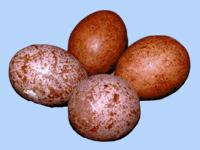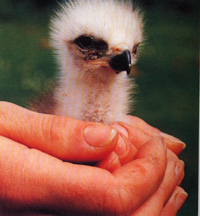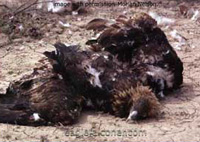Falconers and falconry techniques have been at the forefront of raptor conservation for centuries.
Here in the modern west we tend to think of the conservation of species as a mantra of the twentieth century but in fact the great Kublai Khan, an avid falconer, as reported by Marco Polo was dedicated to his game reserves where his system of planting millet and grain as food and cover for pheasants and quails is still practised around the world today.
The Khan ruled more of the worlds people than any other man in history and he decreed an order to prohibit every person throughout all the countries under the Khan’s rule from killing hares, roebucks, fallow deer, stags or any other animals of that kind, including all large birds between the months of March and October.
This was probably the first close season ever declared for hunted species to breed and multiply unmolested.
Towards the end of the twentieth century falconers realised the plight of many raptor populations declining due to the effects of DDT had to be reversed.
Captive breeding of raptors in Zoological collections had been very poor but with their unique skill and knowledge of raptor care falconers were soon breeding raptors in very large numbers.
Enough in fact to reverse much of the damage done to the wild population of peregrine falcons across the United States.
This unique skill and knowledge of falconers has been used to help conserve raptors throughout the world and continues to assist Bird and wildlife protection agencies when falconry and raptor breeding skills are required.
The following links and pages will give you more information on how falconry is and has been at the forefront of raptor conservation. |
 |
When Jeffrey Lendrum was given thirty months in prison for stealing and attempting to smuggle fourteen peregrine falcon eggs from Birmingham to Dubai in May, the falconry community applauded.
read more how falconers saved and hatched the eggs and helped to return the peregrine chicks to the wild. |
 |
In 1987 Kite Wardens in Wales started to bring kite eggs to us for artificial incubation. These eggs were ones that had little chance of survival, such as third eggs or abandoned nests. In the following years falconer conservationists hatched 53 kite chicks for return to the wild. Most went to nests in Wales, but a few went to the first project in England. Read more. |
 |
In the face of an environmental disaster falconer conservationists stepped up to the plate, and created what has become the greatest conservation captive breeding and successful progeny release back into the wild of any species in history.
After the great success of the peregrine falcon program the Peregrine Fund’s World Centre for Birds of Prey now concentrates on numerous raptor conservation projects around the world.
Read more.…..
visit the World Centre for Birds of Prey. |
 |
In April of 1972, a new effort to increase consideration for eagles was spearheaded by the Idaho Power Company. It had found a problem with eagle electrocutions, the eagles often use power poles as landing sites from which to scan the surrounding terrain for game. A wingspan from six to eight feet makes it easy for a landing eagle to simultaneously touch the two phase conductors ( or one phase conductor and a ground wire) on either end of the crossarm.
Read how Morlan Nelson, falconer conservationist saved the eagles and changed a Nations perception towards Birds of Prey. |
| |
|
|
